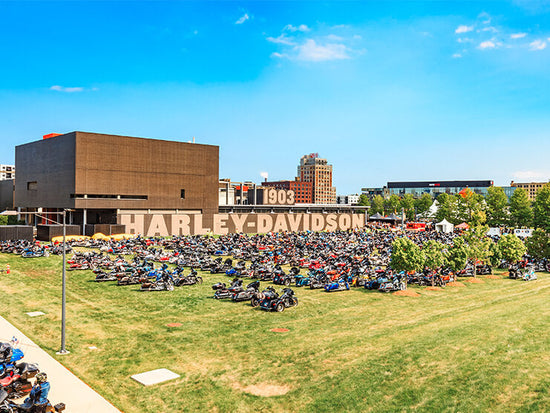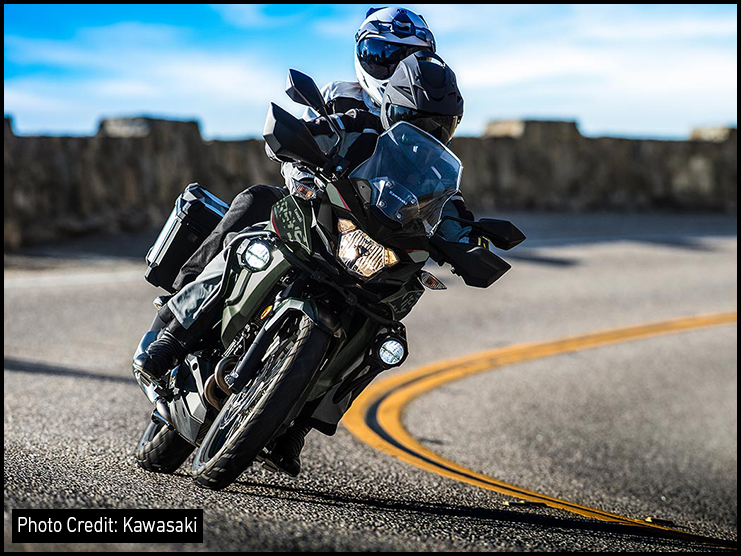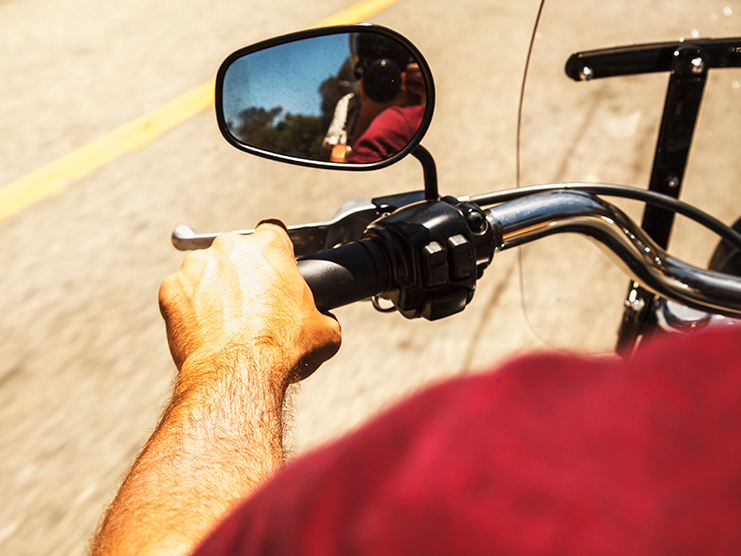Table of Content
Harley Davidson has always been at the forefront when it comes to bringing more to the table by innovating its engine technology for better power output and maximum performance. The Twin Cam 103 engine is one of the masterpieces produced by H-D which continued to power the Harley bikes until the Milwaukee-Eight came. However, the Twin Cam 103 has still a separate fan base, and bikes powered by this engine are still in demand.
As common with a few notable engines in the market, the Twin Cam 103’s success story also has a few low points. Alongside sturdy build and authentic V-Twin performance, the Twin Cam 103 was reported by riders to have certain issues. These issues were common with many riders so it was necessary to point them out and provide solutions to make the bike run smoothly and error-free. Continue reading this article to learn about the common Harley Davidson 103 engine problems and how to fix them. However, before we get deeper into the issues, let’s get to know a little about the iconic Twin Cam 103 engine by Harley Davidson.
Note: The Twin Cam 103 engine problems discussed and addressed in this article are purely based on user reviews and riders’ experiences and are not intended to defame any brand/company.
1. Harley Davidson Twin Cam 103 Engine Profile

Harley Davidson Twin Cam 103 Engine | |
|---|---|
Manufacturer |
Harley Davidson |
Engine Displacement Size |
103 cu in (1,690 cc) |
Cooling System |
Air-Cooled |
Engine Layout |
V-Twin |
Torque |
125-136 Nm |
Horsepower |
77-80 hp |
Average Fuel Economy |
42 mpg |
Compression Ratio |
9.6:1 |
Bore |
3.875 in / 98.4 mm |
Stroke |
4.375 in / 111.1 mm |
Valves Per Cylinder |
Two |
Fuel Delivery System |
Electronic Sequential Port Fuel Injection (ESPFI) |
Cams |
One-Per-Cylinder with Two Lobes Each |
Cam Drive |
Silent Chain |
Combustion Chamber |
Bathtub-Shape Chamber |
Oil Pump |
Internal Twin-Gerotor |
Transmission Attachment |
Attached Directly to the Engine |
Introduced In |
2010 |
Discontinued In |
2017 |
Successor |
Milwaukee-Eight |
Predecessor |
Evolution Engine |
2. A Brief Overview of Twin Cam 103 Engine
The term “Twin Cam” was first coined in 1998 when Harley Davidson replaced the Evolution Engine with the Twin Cam. The Twin Cam has two operational camshafts instead of the traditional single-cam engine hence it was named ‘Twin Cam’. It became a trademark V-Twin engine by Harley as it was quite powerful and had that classic V-Twin rugged persona.
Initially, the Twin Cam engine was produced with an engine displacement size of 88 cu-in (1,450 cc) and then was increased to 96 cubic inches (1,584 cc) in 2017 which was known by the name “Twin Cam 96”. Harley Davidson needed more out of the engine for its esteemed heavy-duty touring machines to ensure there was no limitation regarding high-torque performance for unrestricted touring. The Twin Cam 103 was finally introduced in 2010 with a displacement size of 1,690 cc.
The Twin Cam 103 was able to produce 6% more torque than the Twin Cam 96. It was immediately brought to the production line and appeared on most top-of-the-line featured Harley models, including the Harley Davidson Softail, Dyna models, and touring lineup.
3. Harley Davidson Twin Cam 103 Engine Problems and How to Fix Them
The Harley Davidson Twin Cam 103 engine may be a highly reliable and long-lasting power mill if you are a die-hard Harley fan. According to most non-biased reviews and opinions, there are certain constantly reported problems with the Twin Cam 103 that can become severe with time if not addressed. The Twin Cam 103 not only causes you frustration due to showing problems, but it can also become a serious safety threat if you ignore any of the issues.
In addition, the H-D Twin Cam 103 engine can be much costlier to maintain as the frequency of the maintenance cycle increases over time. So, you must be prepared before you choose to buy an old Harley classic powered by a Twin Cam 103.
3.1 Plastic Shoes on Cam Chains
One of the major problems with the H-D Twin Cam 103 lies in its design and you would be appalled to learn that the Cam Chains have plastic shoes which is a sign of poor built quality. What can you expect from plastic-made shoes in the cam chains that have to move against other surfaces to operate? They wear out pretty soon due to constant grinding movement between the rubber shoes.
As soon as these plastic shoes are gone, the risk of exposed metal surfaces getting in contact with each other increases. This rubbing movement can result in metal shaving which is a serious indication that your Twin Cam 103 engine can fail anytime soon.
On top of it, you cannot get it fixed even after installing a new hydraulic tensioning system. The plastic shoes on the cam chains are most likely to last 15,000 miles. If you choose to replace the hydraulic system with a new one, it can increase the durability to only a certain extent. Still, you will have to replace the plastic shoes every 40,000 miles.
3.2 How to Fix Early Wearing of Plastic Shoes in the Twin Cam 103 Engine
You may probably not get any fruitful assistance from the Harley Dealerships due to being a discontinued engine technology, therefore, you must get your shoelaces tight as you have to do some work by yourself. There are a few solutions to solve this problem, but it will only delay the issue, not resolve it completely.
Using Premium-Quality Oil
One way to settle down the early wearing of plastic shoes in the cam chain is by using premium-quality oil to avoid harsh grinding movement of these parts. This solution can only delay the early wearing of plastic shoes but is not a durable solution.
Installing a Fan-Assisted Oil-Cooling System
Adding an oil-cooling system with an assisted fan can help lower the engine temperature and keep it cool. As the engine temperature does not exceed a nominal level, the moving parts grind against each other comparatively smoothly, making plastic shoes live a little longer.
Replacing the Gear System
Coming to a durable solution, replacing the gear system can help you completely resolve the Twin Cam 103 engine’s poorly built cam chain issue. The same has been suggested and approved by most motorcycle experts but it is a relatively expensive solution.
| Fixing the Plastic Shoe issue in the Twin Cam 103 Engine | |||
|---|---|---|---|
| Solutions | Durable/Temporary | Cost | Outcome |
| Using Premium-Quality Oil | Temporary | Cheaper | Only delays the issue |
| Installing a Fan-Assisted Oil-Cooling System | Temporary | Normal | Only delays the issue |
| Replacing the Gear System | Durable/Long Lasting | Expensive | Can fix the issue for a longer period |
3.3 Excessive Engine Heat Problem
Another common issue with the H-D Twin Cam 103, like other Harley engines, is the excessive engine heat problem. As most Harley riders complain, if you are riding on a Twin Cam 103 Harley on a hot day, the engine heat can burn your legs as you cruise at highway speeds. Riding through busy traffic roads can be a major problem while riding such big V-Twin bikes due to the lack of airflow available. The air-cooling system may benefit the motorcycle in terms of aesthetics as it makes it simpler and provides a full view of the cylinders, but it is ineffective to cool down such high-displacement V-Twins.
3.4 How to overcome the Twin Cam 103 engine heating problem
For an air-cooled engine, no magic can help you solve this issue. These air-cooled engines are inherently hotter to ride, especially in hot weather conditions. However, we have some tips for you to at least make it manageable to ride a motorcycle with a Twin Cam 103 engine.
- Avoid riding on extremely hot sunny days or at least during the peak hour when the sun is right above your head.
- Ride slowly at lower rpms. Do not push the engine above a certain limit where it has to work harder to push the bike.
- Do not ride excessively in busy traffic areas.
- Using a good-quality oil is important as it causes the moving parts to grind against each other smoothly to avoid producing excessive heat.
- Regularly clean the motorcycle air filter for better air intake
- Use exhaust pipes that are straight and short.
- Regularly clean the cooling fins to remove any dust blockage for better airflow.
3.5 Loose Crankshaft Problem
A crankshaft keeps the pistons inside the engine cylinders moving in an aligned and linear manner to produce the mechanical force that drives the rear wheel. It is undoubtedly a significant engine part that keeps it working. What if it is misaligned or becomes loose? You cannot even imagine how catastrophic it can be for an engine. The Twin Cam 103 is suspected to have a loose crankshaft issue as reported by several owners.
This major problem of loose crankshaft in the Twin Cam 103 further becomes a root cause of several other issues, including excessive vibrations, early wear of moving parts, unpleasant noise, and decreased engine efficiency.
3.6 How to Fix a Loose Crankshaft Problem
As one can think, fixing a loose crankshaft problem in the Twin Cam 103 engine will require opening the engine and a complete overhaul. It may either require tightening up the loose crankshaft or replacing it. Make sure you fix the loose crankshaft issue on time or else it can eat the whole engine up.
Also, if you are a regular biker, you should carefully observe any issue with the engine beforehand and check for any symptoms including irregular noise, unusual vibrations, and compromised engine performance.
3.7 Twin Cam 103 Engine Noise Problem
The most common problem with the Harley Davidson Twin Cam 103 engine is the unwanted noise produced by the engine. However, most Harley riders misunderstand it as normal and choose to live with it, ignoring the fact that it can be an indication of a disaster.
Just by listening to the noise coming out of the engine, you cannot exactly predict what is causing it as there can be several reasons. The Twin Cam 103 engine noise can either be due to worn-out valve components or a cam chain tensioner. The worn-out cam chain tensioner usually generates a clanking sound. The irritating noise can also be due to a loose or misaligned crankshaft and other engine parts.
If your motorcycle’s primary drive, chain, and gears are not properly adjusted, or misaligned, or there is a certain amount of slack, they start to produce unwanted irritating sounds.
3.8 How to Fix the Twin Cam 103 Noise Problems
- Through proper and regular maintenance of your Harley bike, powered by a Twin Cam 103 engine, you can fix the noise issues.
- Make sure to keep the parts lubricated to avoid excessive wear and tear.
- Though regularly inspecting the engine, you can get to know about any issue beforehand.
3.9 Starting Problem with the Twin Cam 103
The Harley Davidson Twin Cam 103 is also reported to show starting issues due to various reasons. If you attempt several times to start the engine, it can increase the risk of wear and tear, causing extra load on the starter mechanism and battery.
The various reasons causing the Twin Cam 103 engine to not start properly include:
- A faulty fuel delivery system that includes the fuel lines, fuel injection system, carburetors, gas tank, and fuel pump, is a major cause of why the Twin Cam 103 doesn’t start.
- A faulty ignition system that includes the ignition coil and spark plugs, can also fail, causing starting issues.
- Almost every modern motorcycle has an electric start mechanism to crank up the engine. The starters are connected to an electric starter motor to produce the electric spark at the spark plug. Even if you have a fully charged and functional motorcycle battery, the Twin Cam 103 engine may not start due to a faulty starter motor.
3.10 How to Fix the Starting Problems
- The first thing you should check is your motorcycle battery if your Twin Cam 103 engine is finding it hard to crank up.
- You will either need to fix or replace the starter motor, spark plug, or ignition coil if they are the reason why your motorcycle is not cranking up.
- Keep your gas tank clean and regularly check for any signs of rust formation inside the gas tank. The rust can enter the fuel lines, fuel injectors, carburetors, and engines, causing them to malfunction.
4. The Bottom Line
Harley Davidson has always been on top of the priority list of most American riders. Regardless of the various issues with the H-D Twin Cam 103 engine, Harley Davidson motorcycles still manage to ensure a good holding value. You can still sell an old Harley Davidson at a good price due to its better resale value.
However, if you want to know about an old Harley model powered by a Twin Cam 103 from a buyer’s perspective, there are several problems attached to it. The Twin Cam 103 engines are reported to have numerous issues including excessive engine heating, noise issues, early wearing of internal parts, starting problems, misalignment, and poor build quality.
Most of these problems can be eliminated through proper and regular maintenance. However, in certain cases, you must replace faulty parts before they damage the whole engine.
Along with regularly maintaining your motorcycle for engine longevity and better performance, you must also consider a few customization options to make it extra comfortable and a better ride partner on longer rides. Viking Bags , a leading motorcycle luggage and aftermarket parts brand, offers a range of luggage bags and parts that perfectly suit your make and model. In the cruisers category, the company offers saddlebags , tour packs , tank bags , sissy bar bags , backpacks , trunk bags , and much more.
For an improved riding stance on long-distance rides, Viking Bags also makes new seats , handlebars , sissy bars , backrests , crash bars , and fairings .







Leave a comment
All comments are moderated before being published.
This site is protected by reCAPTCHA and the Google Privacy Policy and Terms of Service apply.